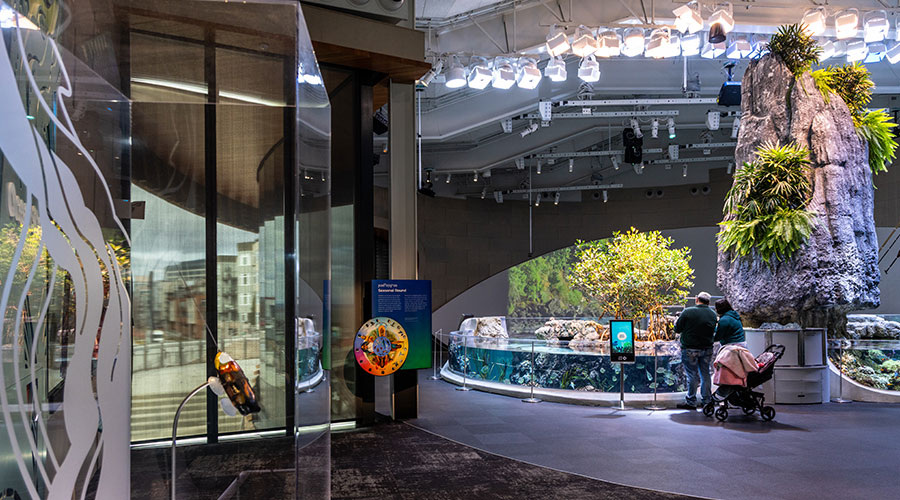Energy Codes, Technology Improvements Driving Changes in Lighting
Changing energy codes have fostered bi-level ballasts and switching systems in lighting schemes, as well as other changes. Technology improvements are also driving improvements.
Recent versions of the ASHRAE 90.1 energy standard and some state energy codes are making bi-level lighting mandatory for new construction and major lighting renovations. The goal is to cut electricity use whenever natural light or tasks allow a lower light level.
Likewise, some codes now call for automatic lighting controls in relatively small spaces. In the past, once lighting wattages had been reduced, occupancy sensors were often not economical. Where they could not replace existing wall switches due to room layout or other reasons, labor for wiring to ceiling-mounted sensors was prohibitive or difficult. Enter wireless sensors that communicate by radio to relays built into new wall switches. Using one of several wireless standards (e.g., EnOcean), a variety of such products address such issues.
To cut kilowatt-hours when lighting stairwells, John L. Fetters (CLEP), owner of Effective Lighting Solutions, suggests fixtures that contain their own sensors. When no occupancy is detected, they drop down to only a third of full light output and wattage. Stairwells never go dark, thus maintaining safety and security while greatly cutting operating cost.
Changing occupancy patterns and tasks suggest other ways to economize on lighting. The proliferation of computer-based tasks has greatly reduced the need for high ambient light levels. Low-cost LED task lights are now available to provide more light just where it's needed, instead of continually pumping it out of ceiling-mounted fixtures. When personnel are out of the office or working from home, task lights at the facility remain off, cutting wattage and consumption. For such locations, Fetters also suggests use of vacancy — as opposed to occupancy — sensors. The former require occupants to manually turn lights on, but then shut them off when a room is empty. Doing so allows occupants to keep ceiling-mounted lights off when daylight or task light is preferred instead.
Addressable ballasts are available that may be controlled via low-voltage, wireless, or powerline carrier systems, allowing managers to adjust output of individual fixtures. Customization of light levels by location and task offers savings during cleaning, re-stocking, and maintenance, and in multi-use areas.
Outdoor lighting — long the sole turf of high intensity discharge (HID) systems — is also undergoing big changes. Both LED and high intensity fluorescents are fostering dimmable fixtures with instant re-start, unlike their predecessors. Marrying that capability with occupancy sensors may provide big savings when parking areas are empty or sparsely used.
For parking structures, Fetters sees many good options. He likes bi-level LED fixtures and (where feasible) photosensor controls on perimeter lighting to take advantage of daylight.
Benefits of Lighting Audits
Spaces are always undergoing change, and therein lies a lighting question, and possibly the benefits of a lighting audit.
"Ask yourself this," says Willard Warren, a lighting and energy consultant based in New York City. "Has anything changed in the nature of the lighting tasks facing your employees? Might you benefit from reducing the ambient light level and introducing local task lighting?"
Upgrades installed in some locations years ago may have already been replaced by new fixtures, with different layouts and controls, all of which offer new opportunities for cost cutting. To capture and evaluate them, lighting audits need to be redone.
A new lighting audit may also offer a useful perk. Auditors now use tablet-based tools that produce an electronic record of existing lighting, useable as a maintenance record. Such a database eliminates wasted personnel time by indicating (in advance of a visit) wattage, type, color, and quantity of lighting equipment in each room. |
Related Topics:














